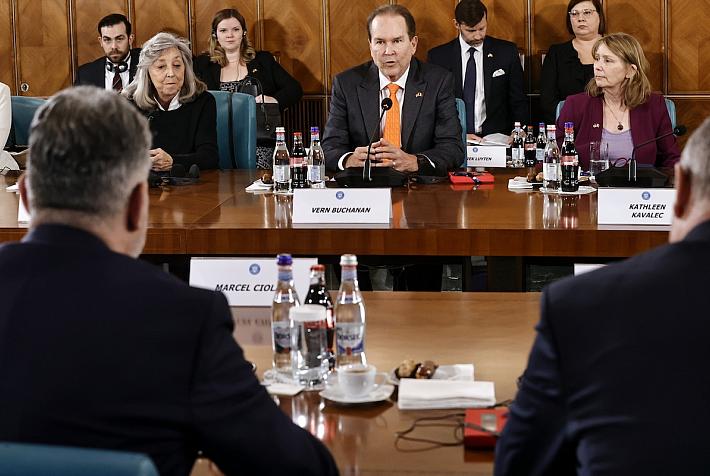High internal and external concerns put on hold policy rate cuts in Romania

Romanian analysts are unanimous in ruling out any rate cut at the National Bank of Romania (BNR) monetary board meeting on April 7. Still, they expect a 50-75 basis points (bp) cut by the end of the year depending on the future orientation of fiscal policy, the prospects for economic activity, as well as the risks generated by trade protectionism and the position of other central banks.
Romania's central bank cut the monetary policy rate from 7% (where the rate had stayed during the inflationary peak caused by the war in Ukraine) to 6.5% immediately after mid-2024 and has kept it constant since then – while the consumer price inflation has hovered around 5% over the same period. Core inflation has recently decreased to the same 5% level (in February).
As high internal and external risks are high and the March inflation most likely exceeded the central bank's 4.6% y/y target, the analysts' expectations for lower inflation towards the end of the year seem to diverge. By the end of December 2025, headline inflation will be 3.7%, according to BCR's chief analyst, Ciprian Dascălu, speaking for Economica. ING Romania's chief economist, Valentin Tataru, expects 5.2% average inflation for the whole year – down from 5.6% in 2024 but above the 5% y/y rates since June 2024.
The fiscal policy problem remains central on the internal front, while the growth concerns are also relevant. The 1.6%-of-GDP deficit in Jan-Feb prompted concerns of a full-year deficit of 9%-of-GDP unless significant steps are taken after the May presidential elections – in the form of a 2-3 percentage points (pp) VAT rate cut or significant tax rate hike. On the external front, the protectionist measures imposed by the US through their indirect effects (affecting Romania's exports, imported inflation, and the stance of other central banks) are reasons for cautious monetary policy.
Twin deficits represent an important constraint for monetary policy, the chief economist emphasizes, speaking for Economica.
In a research note, ING Romania expressed expectations for policymakers not to move rates or loosen their FX grip until both the internal and external situation gets clearer.
"We continue to pencil in 50 bp of rate cuts in the second half of this year, assuming the uncertainty of the inflation path decreases and policy easing from other key central banks (Fed, European Central Bank, National Bank of Poland) carries on as projected," the note reads.
ING Romania's chief economist Valentin Tataru argues that March inflation data, to be published on April 11, will likely justify a cautious monetary policy "as we expect inflation to reach 4.9%, noticeably above the central bank's estimate of 4.6%.
Overall, the inflation situation in 2025 remains fragile, being exposed to fiscal, energy, and geopolitical developments. We see average annual inflation at 5.2%," Tataru says.
In its own research note, Erste Bank Group said there might be even three 25 bp rate cuts by the end of the year, "with risk for less cuts subject to fiscal and political developments."
"Weaker growth numbers and market expectations for the ECB rate path could be arguments for the doves. In the decision-making process, these dovish calls are likely to be outweighed by fiscal concerns, increased FX vulnerability due to elevated risk premia and sovereign rating risks, as well as high and mostly upside inflation forecast uncertainties," Erste analysts explain.
(Photo: Ruletkka/ Dreamstime)
iulian@romania-insider.com












